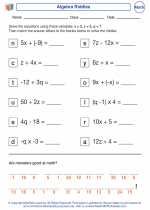Fractions
A fraction represents a part of a whole. It consists of two numbers, one above the other, with a line between them. The number on top is called the numerator, and the number on the bottom is called the denominator.
Types of Fractions
There are several types of fractions:
- Proper Fraction: A fraction where the numerator is less than the denominator, e.g., 1/2.
- Improper Fraction: A fraction where the numerator is greater than or equal to the denominator, e.g., 5/3.
- Mixed Number: A whole number combined with a fraction, e.g., 2 1/4.
- Equivalent Fractions: Fractions that have the same value but may look different, e.g., 1/2 and 2/4.
Operations with Fractions
There are four basic operations that can be performed with fractions: addition, subtraction, multiplication, and division.
Addition and Subtraction
When adding or subtracting fractions, the denominators must be the same. If they are not, you need to find a common denominator before performing the operation. Once the denominators are the same, you can add or subtract the numerators and keep the denominator unchanged.
Multiplication
To multiply fractions, simply multiply the numerators together to get the new numerator, and multiply the denominators together to get the new denominator.
Division
To divide fractions, multiply the first fraction by the reciprocal of the second fraction (i.e., flip the second fraction and then multiply).
Study Guide
Here are some tips for studying fractions:
- Understand the concept of fractions as parts of a whole.
- Practice identifying the numerator and denominator in different fractions.
- Learn how to convert between improper fractions and mixed numbers.
- Practice finding equivalent fractions for a given fraction.
- Work on adding, subtracting, multiplying, and dividing fractions using different examples.
Remember, practicing regularly is key to mastering fractions!
.◂Math Worksheets and Study Guides Seventh Grade. Introduction to Algebra
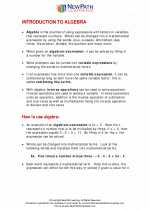
 Activity Lesson
Activity Lesson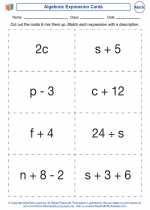
 Worksheet/Answer key
Worksheet/Answer key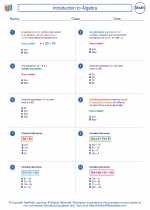
 Worksheet/Answer key
Worksheet/Answer key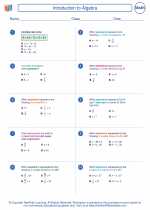
 Worksheet/Answer key
Worksheet/Answer key
 Worksheet/Answer key
Worksheet/Answer key